Practical Strategies to Unclog a Toilet: Step-by-Step Guide

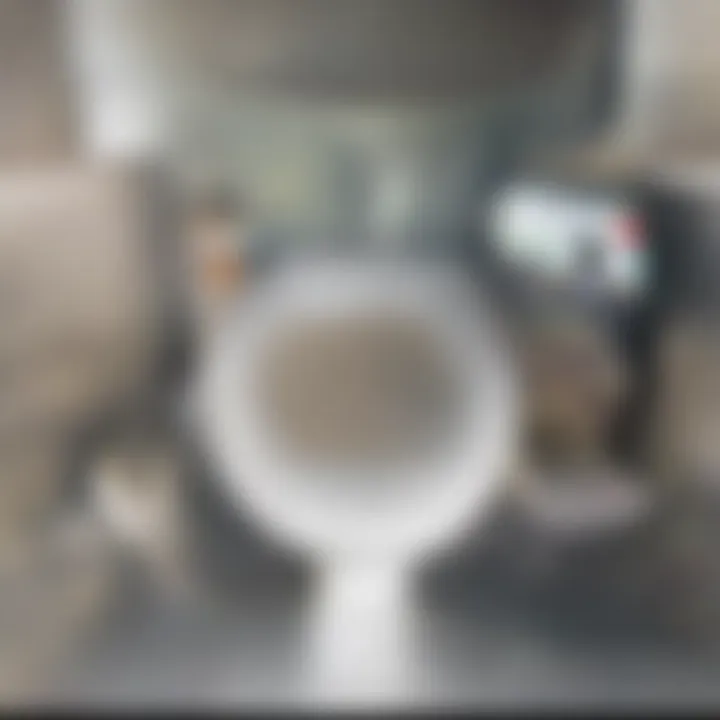
Intro
A clogged toilet is a frequent issue that many homeowners face. Understanding practical strategies to resolve this problem is essential for maintaining a functional bathroom. Whether you are dealing with a minor blockage or a more serious obstruction, being equipped with effective techniques can save time and frustration. This guide aims to provide a comprehensive overview of methods to unclog a toilet, detailing step-by-step solutions and preventative measures to help you avoid future clogs.
Understanding the Problem
To effectively unclog a toilet, it’s important to first understand the causes of toilet clogs. Common reasons include:
- Excessive toilet paper usage: Using more than necessary can quickly lead to blockages.
- Foreign objects: Items not meant to be flushed, such as toys or sanitary products, often cause significant blockages.
- Pipe issues: Sometimes the problem lies within the plumbing itself, where pipes are too old or damaged.
Recognizing these causes can guide your approach to tackling the issue.
Tools and Materials Needed
Before attempting to unclog the toilet, gather the necessary tools and materials:
- Plunger: A standard cup plunger is usually effective for most clogs.
- Toilet auger: Useful for more stubborn clogs that a plunger cannot fix.
- Rubber gloves: Essential for hygiene and protection.
- Bucket: To catch any overflow or excess water.
- Chemical drain cleaners: Use as a last resort if manual methods fail.
Having these tools ready can streamline the process of unclogging your toilet.
Step-by-Step Guide to Unclogging a Toilet
1. Assess the Clog
Begin by determining the severity of the clog. If the water level in the bowl is high, avoid flushing again as this can lead to overflow.
2. Use the Plunger
Place the plunger over the drain hole and ensure a tight seal. Push down firmly and pull up quickly. Repeat this action until the water begins to drain. This method works by creating pressure that can dislodge the blockage.
3. Try the Toilet Auger
If plunging does not work, insert a toilet auger into the bowl. Turn the handle to allow the auger to navigate through the pipes. This tool can effectively break apart clogs that are deeper within the plumbing.
4. Chemical Solutions
As a last resort, consider using a chemical drain cleaner. Follow the instructions on the label, applying the cleaner while ensuring it is suitable for your toilet type. Wait for the recommended time before flushing with hot water.
It’s essential to use chemical cleaners sparingly, as overuse can lead to pipe damage.
Preventative Maintenance Tips
To minimize the risk of future clogs, implement some simple habits:
- Limit toilet paper: Use only what is necessary. Consider flushing twice when using a large amount.
- Mind what gets flushed: Educate all household members on items that should not be disposed of in the toilet.
- Regular cleaning and inspections: Routine checks can help identify potential plumbing issues before they become serious problems.
Learning how to effectively unclog a toilet equips homeowners with the knowledge to handle common plumbing issues. By understanding the techniques available and practicing preventative measures, you can maintain your home's plumbing with confidence.
Understanding Toilet Clogs
Toilet clogs represent one of the most frequent and frustrating household issues. Not only do they interrupt daily activities, but they can also lead to more significant plumbing problems if not addressed properly. Understanding the fundamental aspects of toilet clogs helps in identifying, diagnosing, and rectifying the issue effectively. By grasping the nature of clogs, one gains insight into preventive measures and when to seek professional help.
Common Causes of Toilet Clogs
Several factors can contribute to a clogged toilet. Recognizing these can aid in preventing future incidents. Common causes include:
- Excessive Toilet Paper: Flushing large amounts of tissue can quickly overwhelm the toilet’s drainage capacity.
- Foreign Objects: Items such as toys, sanitary products, or wipes may create blockages.
- Flushing Inappropriate Items: Not all items are suitable for flushing, and misuse can lead to clogs.
- Mineral Buildup: Over time, minerals from hard water can accumulate and affect water flow.
Understanding these causes allows homeowners to adjust their habits, thus reducing the likelihood of clogs.
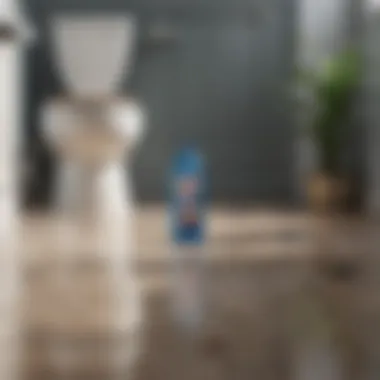
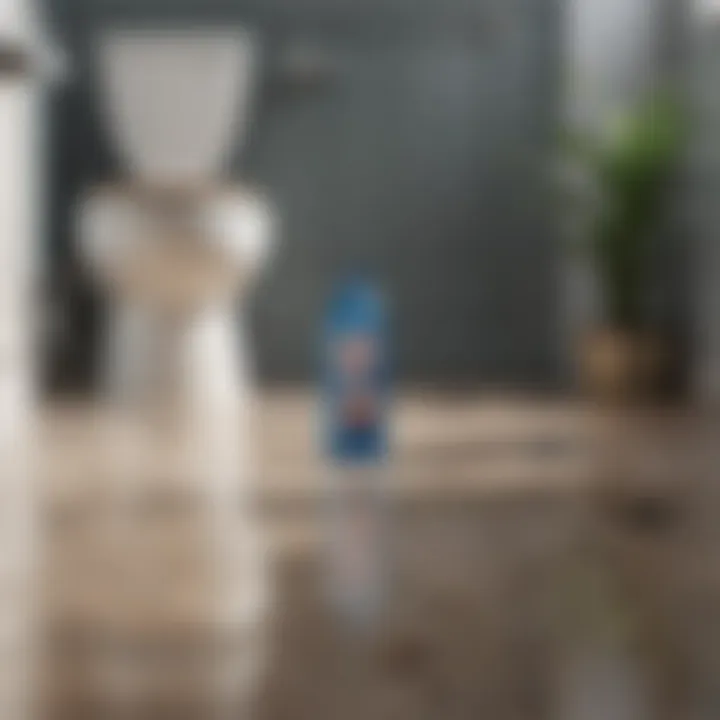
Signs Indicating a Clogged Toilet
Being able to recognize the signs of a clogged toilet is essential for prompt intervention. Here are key indicators to watch for:
- Slow Drainage: Water takes longer than usual to empty after a flush.
- Multiple Flushes Needed: A single flush does not adequately clear the bowl.
- Unpleasant Odors: Foul smells can surface when waste is stagnant due to blockage.
- Water Level Fluctuations: The water level in the toilet bowl rises unusually high or is lower than normal.
Detecting these signs early can save one from more extensive plumbing issues and costs down the line.
Initial Assessment
Before diving into the various methods for unclogging a toilet, it is essential to conduct a thorough initial assessment. This step is frequently overlooked, yet it is pivotal in determining the appropriate course of action. A clear understanding of the severity of the clog and related issues can save valuable time and resources. Learning how to assess the situation enables individuals to approach the problem with a level-headed mindset.
Evaluating the Severity of the Clog
Assessing the severity of a toilet clog involves gauging the impact it has on the toilet's functionality. Several indicators can help determine this:
- Water Level: Observe the water level in the toilet bowl. If it is considerably low, it suggests a minor clog, but if the water rises close to the rim, the obstruction is more severe.
- Flush Performance: Pay attention to how well the toilet flushes. If waste remains after flushing, this signals a significant blockage.
- Recurring Issues: If the toilet has frequent clogs, it may hint at a larger plumbing issue rather than a simple blockage.
A structured evaluation can clarify whether simple tools, like a plunger, will suffice or if more advanced techniques are necessary.
Deciding on a DIY Approach vs Professional Help
Once you have assessed the clog's severity, the next important decision involves whether to handle the situation yourself or to seek professional assistance. Here are factors to consider:
- Skill Level: If you're comfortable using basic plumbing tools and techniques, a DIY approach might be suitable. Familiarity with plungers and augers is beneficial.
- Extent of the Problem: For severe clogs, especially those accompanied by water leaks or persistent drainage issues, calling a plumber is recommended.
- Time Constraints: Evaluate your available time. A DIY attempt may take longer than anticipated, leading to delays.
- Cost Factors: While DIY methods typically save money, improper handling can lead to more significant issues that might incur higher expenses later.
Important Note: Only attempt a DIY solution when you are confident the problem is manageable. When in doubt, it is wise to contact a professional.
By conducting an initial assessment, one can mitigate risks and set the stage for an effective unclogging process.
Mechanical Techniques to Unclog
Mechanical techniques play a vital role in managing clogs in toilets. These approaches provide immediate solutions and are often cost-effective. Utilizing physical tools allows homeowners to tackle clogs without relying on commercial chemical solutions, which may pose health risks or damage plumbing.
Furthermore, mechanical methods promote a hands-on understanding of plumbing systems. They also strengthen DIY skills, beneficial for future maintenance tasks. Each technique offers unique advantages, and knowing when and how to use them can empower almost anyone facing a toilet clog.
Using a Plunger Effectively
A plunger is a fundamental tool in unclogging toilets, and using it correctly can be the difference between a simple fix and a complicated situation.
Types of Plungers
There are two main types of plungers: the cup plunger and the flanged plunger. The cup plunger is common; it has a rounded rubber head suitable for flat surfaces like sinks. However, the flanged plunger is specifically designed for toilets, featuring an extended rubber flange. This type fits securely in the toilet bowl and creates a better seal, increasing suction power.
The flanged plunger’s design makes it more effective for toilets, especially in deeper clogs. A solid seal is crucial for generating the necessary pressure to dislodge blockages effectively. Choosing the right plunger can significantly impact the outcome of your unclogging efforts.
Proper Plunging Technique
The proper plunging technique is essential for maximizing efficiency. First, position the plunger in the toilet bowl, ensuring it covers the drain completely. Push down gently at first to release air trapped in the rubber. Then, apply firm and rhythmic force up and down without breaking the seal. The goal is to create a strong suction and pressure that loosens the clog.
Maintaining a steady rhythm can exhaust the blockage until it is removed. A common pitfall is lifting the plunger too soon, which can break the seal and reduce effectiveness. Implementing this technique properly can lead to quick results and alleviate frustration, reinforcing the importance of execution.
Employing a Toilet Auger
When plungers fail, a toilet auger is a beneficial alternative. This tool can reach deeper clogs beyond the reach of a standard plunger.
Choosing the Right Auger
When selecting a toilet auger, consider the design and length. A standard auger typically measures about 3-6 feet, which is suitable for most household toilets. Some models also include a bulbous end to grab and break apart stubborn clogs.
Choosing a model with a strong, flexible cable increases the chance of effective usage in tricky clogs. A poorly designed auger might not reach or clear the blockage effectively, leading to wasted effort.


Step-by-Step Usage Instructions
Using a toilet auger effectively requires a series of simple steps. First, insert the auger into the toilet bowl, letting the bulbous tip slide down the drain. Turn the handle clockwise as you feed the cable further into the pipe. This action allows the auger to snag or break up the clog.
Once you believe the obstruction is cleared, slowly withdraw the auger while continuing to rotate the handle. Check for any remnants. Finally, flush the toilet to test the flow.
Using this method reduces the risk of pipe damage while effectively handling clogs that resist simpler tools. Understanding how to use an auger properly can greatly enhance your ability to address plumbing issues.
Chemical Solutions
Chemical solutions play a significant role in the realm of toilet unclogging. They provide a fast and effective way to deal with stubborn clogs that mechanical methods like plunging or augering may not fully resolve. Understanding when to utilize these chemicals and their potential hazards is essential for safe and effective use. Chemical drain cleaners work through a variety of methods depending on their chemical composition. These can range from caustic substances that eat away at blockages to oxidizing agents that create a reaction to break down waste materials. Despite their effectiveness, it is crucial to recognize the risks associated with these products, both for the plumbing system and personal safety.
Options for Chemical Drain Cleaners
When considering chemical drain cleaners, there are three primary categories:
- Caustic Cleaners: These cleaners contain strong alkaline chemicals, such as sodium hydroxide. They work by generating heat and creating strong reactions with clogs.
- Acidic Cleaners: Acid-based cleaners use substances like sulfuric acid to dissolve organic material and is quite effective, but they can be harsh on pipes.
- Enzyme Cleaners: These are a more environmentally friendly option. They contain enzymes that break down organic waste over time. While they may take longer to work, they are safer for plumbing systems.
It’s important to read labels carefully and follow the manufacturer's instructions to ensure proper use.
Safety Precautions with Chemicals
Using chemical solutions requires careful attention to safety. Here are key precautions to consider:
- Protective Gear: Always wear gloves and safety goggles to prevent skin and eye contact.
- Ventilation: Ensure the area is well-ventilated. Chemical fumes can be harmful when inhaled.
- Storage: Keep these chemicals out of reach of children and pets. Store them in a cool, dry place.
- Do Not Mix: Avoid combining different cleaning agents, especially caustic and acidic products, as it can cause harmful reactions.
Following these guidelines can help in using chemical cleaners effectively while minimizing risk.
Alternative Methods
In the realm of toilet maintenance, exploring alternative methods serves as an important aspect of our approach to unclogging toilets. While traditional mechanical techniques or chemical solutions are widely known, alternative remedies can often provide effective results with minimal effort. Understanding these methods allows homeowners to address clogs in a more eco-friendly manner, using materials often readily available in the home. Additionally, these options may help reduce dependency on harsher chemicals that can cause potential damage to plumbing systems over time.
Using Baking Soda and Vinegar
Baking soda and vinegar are common household items that, when combined, create a chemical reaction. This reaction produces carbon dioxide gas and acetic acid, which can effectively help to break down organic matter causing the blockage in your toilet.
Steps to Use Baking Soda and Vinegar:
- Gather Your Materials: You will need about one cup of baking soda and one cup of vinegar. It is also helpful to have a measuring cup and a large container to keep the area clean.
- Preparation: Before applying the mixture, ensure to remove excess water from the toilet bowl. You can use a cup or sponge for this.
- Apply Baking Soda: Pour the baking soda directly into the toilet bowl, ensuring it is evenly distributed.
- Add Vinegar: Follow up by pouring the vinegar into the bowl. You will notice bubbling and fizzing as the two ingredients react. Let this sit for about 30 minutes.
- Flush: After waiting, flush the toilet to see if the clog has cleared. If necessary, repeating the process may help.
Utilizing baking soda and vinegar is a straightforward method that not only addresses clogs but is also environmentally friendly. This approach avoids the dangers and corrosive effects typically associated with commercial drain cleaners.
Hot Water Technique
The hot water technique is another alternative method for unclogging toilets. The warmth of the water can help break down certain types of clogs, particularly those caused by grease or soap. However, caution is required regarding the temperature of the water and the type of toilet.
Steps for the Hot Water Technique:
- Heat Water: Boil approximately one gallon of water. It is crucial to ensure the water is hot but not boiling. Boiling water can crack porcelain toilets.
- Preparation: As with the earlier method, remove excess water if necessary to allow the hot water to reach the clog more effectively.
- Pour Slowly: Carefully and slowly pour the hot water into the toilet bowl from a height of 1-2 feet. This height allows for greater force to be applied to the clog.
- Wait: Allow a few moments for the hot water to work its magic on the clog. If the water starts to drain, it may indicate that the clog is loosening.
- Flush: Attempt to flush the toilet to finish the process. If the clog persists, more attempts may be needed.
Using hot water is a cost-effective method that relies on physical principles to dissolve obstructions. Simple and efficient, this technique emphasizes the importance of temperature in solving plumbing issues.
Alternative methods add variety to routine toilet unclogging strategies, providing homeowners with options that can be both effective and eco-friendly.
Preventative Measures
Toilet clogs are a common household problem that can disrupt daily routines. Employing preventative measures is essential to minimize the frequency and severity of these clogs. By taking proactive steps, one can save time, frustration, and potentially costly plumbing repairs. Preventative measures include regular maintenance and educating household members on best practices.
Regular Toilet Maintenance
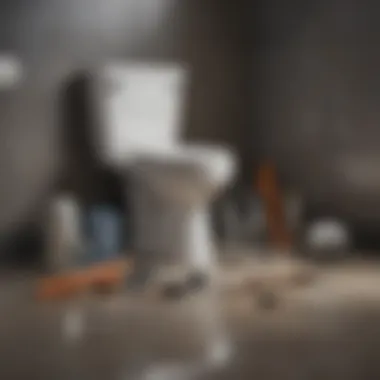
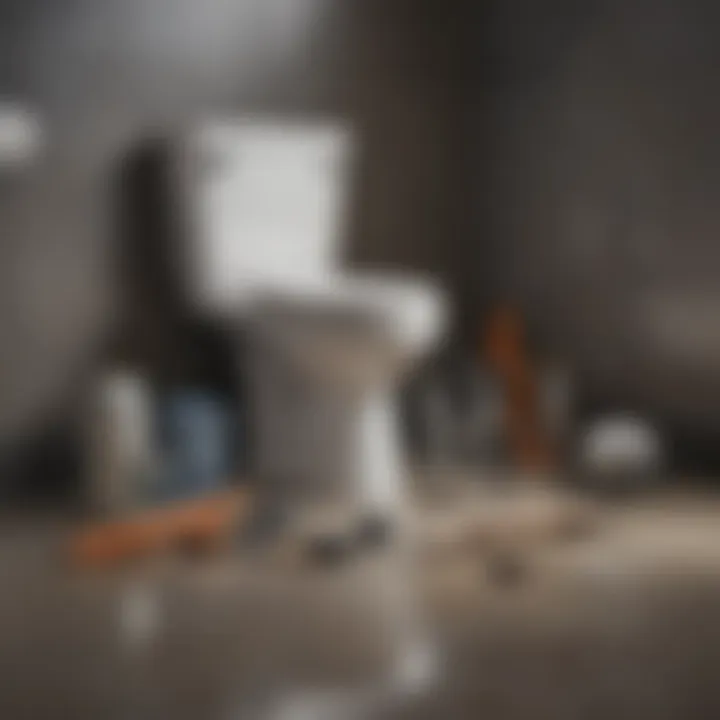
Regular maintenance of your toilet is crucial. Performing simple checks and household tasks can prevent clogs from forming in the first place. This includes monitoring the toilet's flushing mechanism, inspecting the tank and bowl for leaks, and ensuring that the water level is appropriate. Keeping the toilet clean also helps. The buildup of materials such as grime can hinder the flow of water, leading to clogs.
Additionally, periodically checking for signs of wear or deterioration in components such as the flapper, fill valve, and flush handle is advised. Replacing worn parts can improve performance and extend the life of your toilet.
Educating Household Members
Educating everyone in the household about proper toilet use can significantly reduce clogs. It is vital to ensure that all members understand what can and cannot be flushed down the toilet. This knowledge not only helps maintain a functional system but also fosters a sense of shared responsibility.
Best Practices for Using Toilets
One aspect of best practices is teaching the appropriate amount of toilet paper to use. Using excessive toilet paper can lead to blockages. It is important to encourage household members to flush in stages if necessary. This prevents overwhelming the system in one go. Additionally, ensuring that the toilet is flushed completely after each use helps clear waste effectively.
Another key element is to avoid using the toilet for purposes not intended. This includes using it as a wastebasket for items like paper towels or hygiene products. These items do not degrade easily and are significant contributors to clogs.
Items to Avoid Flushing
Certain items should never make their way down the toilet. Common examples include:
- Wipes (even those labeled as flushable)
- Feminine hygiene products
- Cotton balls or swabs
- Thick paper towels
Each of these items has characteristics that can lead to serious blockages. Wipes can tangle and create a mass that prevents water flow. Feminine hygiene products can expand and clog pipes due to their absorption characteristics, and paper towels are designed to hold together when wet, causing a blockage.
When to Call a Professional
A clogged toilet can range from a simple fix to a complex problem. Understanding when to call a professional plumber is essential for effective home maintenance. Ignoring serious issues can lead to more extensive damage and costly repairs. It is better to seek expert assistance in certain situations than to risk worsening the condition.
Indicators of Serious Issues
Several signs indicate a clog may be beyond your ability to handle. Recognizing these early on saves time and money. Here are some key indicators:
- Multiple Clogs: If more than one toilet or drain is clogging at the same time, the problem may be with the main sewer line. This situation requires professional intervention.
- Persistent Backups: A toilet that consistently backs up, despite attempts to unclog it, suggests underlying plumbing issues that may need specialized equipment or techniques to resolve.
- Unpleasant Odors: Foul smells, especially if they persist after attempting DIY solutions, often indicate deeper plumbing issues. Bacteria and debris can generate odors that are not just unpleasant; they may be indicative of a more serious problem.
- Gurgling Sounds: If you hear gurgling sounds from the toilet or other drains, this may mean that air is trapped in the plumbing system. Such issues usually signal problems in the venting system or main drain line.
- Water Levels Fluctuating: If the water level in the toilet bowl rises or falls unexpectedly, it might point to a blockage somewhere in the plumbing system. This symptom calls for professional diagnosis.
"Recognizing these indicators is not just about convenience. It may save you from larger, hidden dangers within your plumbing system."
Finding a Qualified Plumber
When calling a professional, it is crucial to find a qualified plumber. The quality of work can greatly influence the outcome, and a skilled plumber will identify and fix the issue correctly. Here are some tips for locating a competent plumber:
- Check Credentials: Ensure the plumber is licensed and insured. This protects you in case of accidents during the job.
- Look for Recommendations: Ask friends, family, or neighbors for referrals. First-hand experiences provide valuable insight into a plumber's reliability and skill.
- Read Reviews: Websites like Reddit and Facebook often contain reviews and ratings of local services. This information can guide your decision-making.
- Inquire About Experience: A plumber with extensive experience in dealing with toilet clogs specifically may be beneficial. Ask about past jobs and success rates with similar issues.
- Request Estimates: Obtain written estimates from multiple plumbers. This not only gives you a better idea of costs but also allows comparison of services offered.
By identifying the correct timing to seek help and knowing how to find a skilled professional, you can maintain your home effectively. Addressing plumbing issues sooner rather than later can ultimately save money and prevent further complications.
Culmination
Understanding how to effectively tackle a clogged toilet is essential for homeowners. This article has provided a comprehensive guide, discussing various well-defined techniques and strategies. Knowing these methods can save time and money, helping you avoid costly repairs.
The recap serves as a reminder of the most pertinent techniques to address toilet clogs. From utilizing basic mechanical methods like plunging and using a toilet auger, to considering chemical solutions and alternative approaches involving household items, each section covers practical solutions that everyone can deploy.
Recap of Key Techniques
- Mechanical Techniques:
- Chemical Solutions:
- Alternative Methods:
- Preventative Measures:
- Using a Plunger: This is often the first line of defense against clogs.
- Employing a Toilet Auger: For more serious blockages, a toilet auger provides deeper reach and power.
- Explore various chemical drain cleaners, ensuring safety during usage and following precautionary measures.
- Chemical methods can be effective but may also pose risks if misused, necessitating caution.
- Baking Soda and Vinegar: A natural solution for minor clogs.
- Hot Water Technique: Simple yet effective, often suitable for gentle blockages.
- Regular maintenance and educating household members on proper toilet use are key to avoiding further clogs.
By synthesizing these techniques, you are better prepared to handle toilet clogs efficiently.
Final Thoughts on Toilet Maintenance
Toilet maintenance transcends just unclogging. It encompasses regular checks and understanding what can lead to clogs in the first place. This knowledge not only keeps your plumbing system healthy but ensures your toilet operates efficiently.
Routine maintenance can greatly reduce the frequency of clogs. Simple actions such as periodically inspecting the plumbing, knowing what substances are safe to flush, and maintaining clear communication in a household about toilet use can make a substantial difference.















